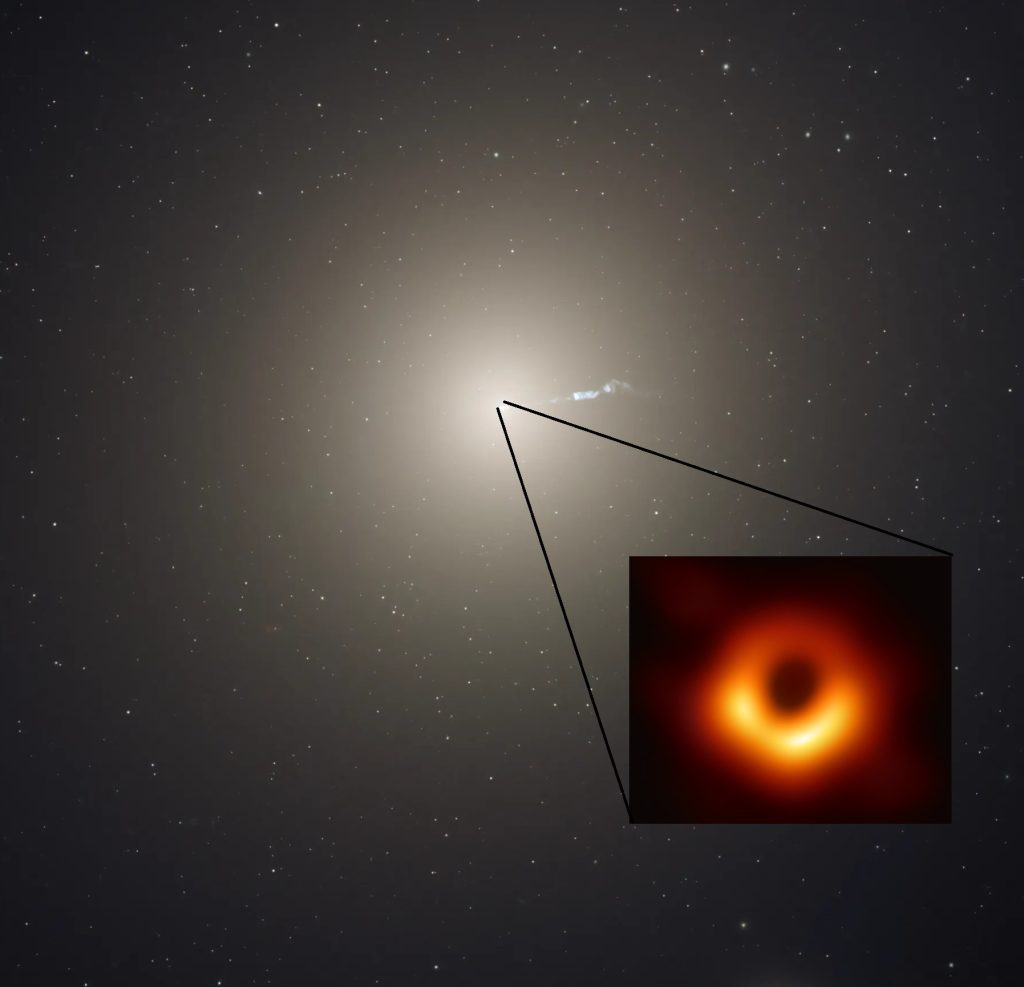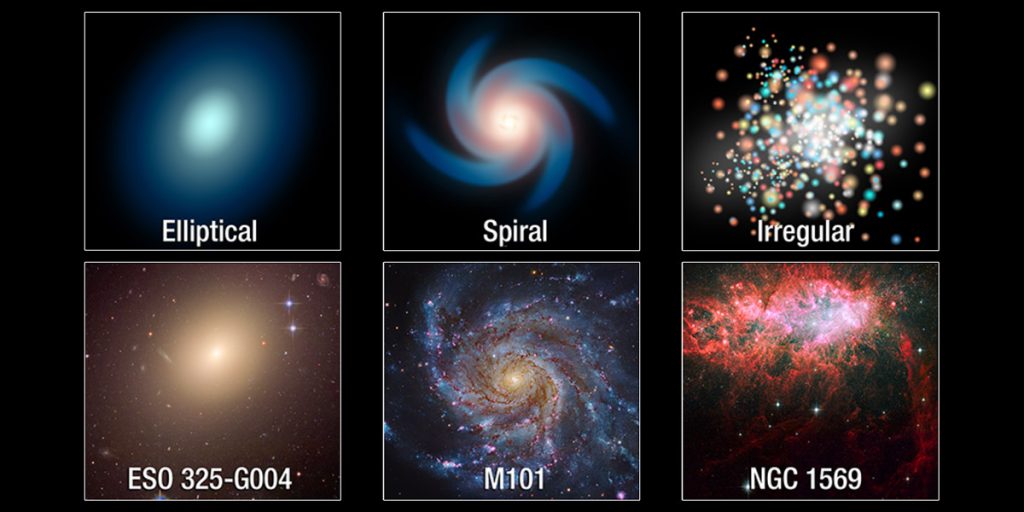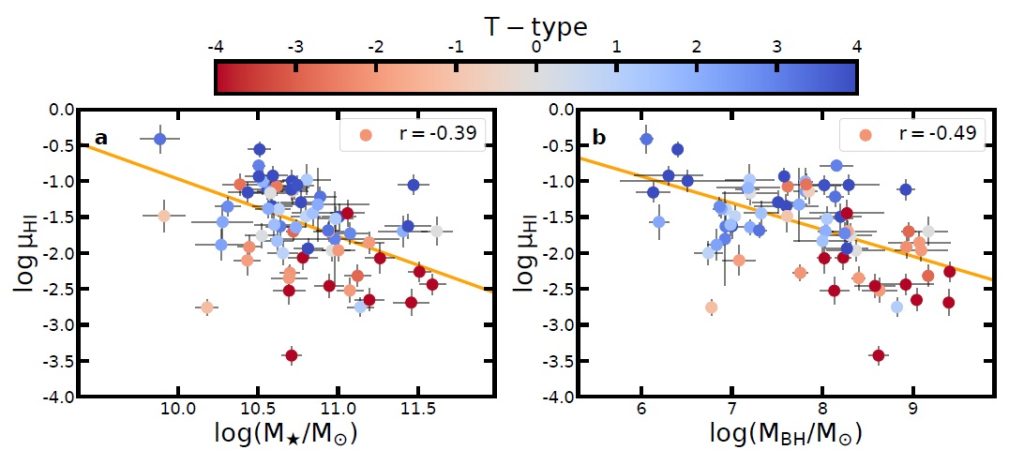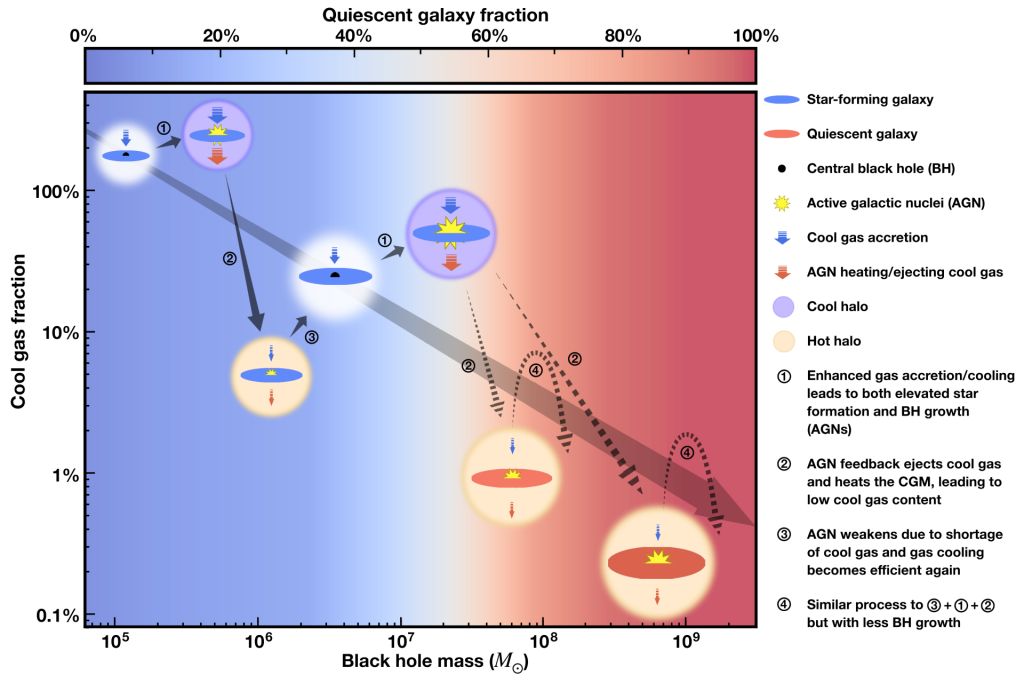It is well established that most galaxies harbor a supermassive black hole, long suspected of hindering the formation of new stars. However, no study had previously demonstrated a direct link between these black holes and the evolution of galaxies.
By analyzing dozens of galaxies, researchers, including those from the Department of Astrophysics at CEA – Paris-Saclay, discovered that the amount of hydrogen gas, essential for star formation, decreases in direct correlation with the mass of the central black hole, much more so than with the mass of the galaxy itself. This gas, primarily sourced from the accretion of matter from intergalactic space, appears to be blocked by black holes, preventing galaxies from replenishing external material. This phenomenon, termed “asphyxiation,” suggests that black holes play a central role in the history of galaxies by limiting their growth.
This study was published in the prestigious journal Nature.
The enigma of the influence of supermassive black holes on the evolution of galaxies
It is well known that nearly all galaxies have a supermassive black hole at their center (see Figure 1). The mass of these black holes has an intriguing relationship with the stars in galaxies: it is roughly one-thousandth of the total mass of all the stars in the galactic bulge.
However, bulges are regions where star formation ceased long ago, leading to the hypothesis that black holes might prevent galaxies from creating new stars. But how? Until now, no direct evidence of the influence of supermassive black holes on the evolution of galaxies had been established.

Massive galaxies with little atomic gas to form new stars
A team of researchers, including members from the Department of Astrophysics at IRFU, CEA – Paris-Saclay, analyzed 69 galaxies for which measurements of the total stellar mass, central black hole mass, and atomic hydrogen gas (HI) reservoir were available, obtained through radio observations.
It is well established that the most massive galaxies are generally elliptical in shape, dominated by galactic bulges composed of aging stars, while spiral galaxies, often less massive, have both a bulge and a disk where new stars are formed (see Figure 2).
This new study confirms this observation, showing that massive galaxies have a weaker reservoir of atomic hydrogen gas, which explains their lack of disks and star-forming regions.

The influence of supermassive black holes on galaxies and their gas reservoirs
This study provides a new perspective on the influence of supermassive black holes on galaxy evolution. By examining the evolution of the gas reservoir across different galaxy types, the researchers demonstrated that the reduction in gas is strongly correlated with the mass of the black hole, much more so than with the mass of the galaxy itself (see Figure 3). The more massive the black hole, the less atomic gas the galaxy has, which is essential for star formation. It appears that the black hole directly affects a galaxy’s ability to form stars.
Since this gas primarily comes from the accretion of matter from intergalactic space, it suggests that black holes may prevent galaxies from receiving external material. This phenomenon, referred to as “galactic asphyxiation” or “starvation” (see Figure 4), could be key to understanding galaxy evolution.

“This study suggests that black holes play a role in the history of galaxies by limiting their growth through a phenomenon of asphyxiation, which prevents matter from falling into the galaxy and thus hinders the formation of new stars,” summarizes David Elbaz, one of the study’s authors and the scientific director of the Astrophysics Department at CEA.
Another hypothesis is that the black hole ejects part of the galaxy’s gas outward, but this is less plausible, as there are observed galaxies with active black holes that continue to form stars.

Contact Irfu/DAp : David Elbaz
Publication : “Black holes regulate cool gas accretion in massive galaxies” Wang et al. 2024, Nature.


